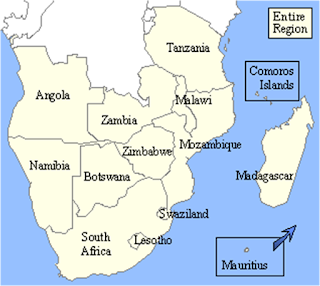Planned end date: 2010 August) following his presentation of the SARRNET platform on Improving Rural Livelihoods in Southern Africa through Root and Tuber Crops. He explains how to link post harvest research to the new market potential of cassava
From 1994 it focused on cassava and s/potato, covering 12 of the 14 SADC countries. Phase I
- From 1999 it concentrated in Malawi, Mozambique, Tanzania, South Africa and Zambia; funds on competitive grants basis; shift from production to demand-led R4D, with bias on private sector participation, income generation and food security. Phase II
- Since 2004, Cyinyanja Triangle and Angola led by different consortiums
- From 2005 ; activities were expanded to include yam, cocoyam and Irish potato.

The goal of SARRNET is to facilitate synergistic regional complementarities to research, production and marketing to improve food production and increase rural incomes by generating technologies that will address common constraints in Southern Africa region through research for development (R4D) of root and tuber crops: (a) Cassava, yam and cocoyam - IITA, (b) Sweet potato, Irish potato - CIP.
 Post harvest technologies developed in collaboration with C-to-C engineering Services, Malawi are: Heavy-duty graters, chippers, Presses, Solar driers and Cassava peeler. Application: 3t/hour, for commercial purpose, eliminate contamination, for medium processors
Post harvest technologies developed in collaboration with C-to-C engineering Services, Malawi are: Heavy-duty graters, chippers, Presses, Solar driers and Cassava peeler. Application: 3t/hour, for commercial purpose, eliminate contamination, for medium processorsInnovations:
- Cassava silage: Potential to economically utilize the bulk of cassava foliage after harvest which currently is put to waste.
- High Quality Cassava Flour: Promoting use of cassava flour in the region for baking to reduce on cost of wheat flour
- Assessment of processed cassava products for fungal and mycotoxin contamination
- Development and testing of processing technologies-peeler machine
- Evaluation and selection of cassava varieties for high beta carotene content
- Screening cassava varieties for cold/frost tolerance
- Investigations into agronomic practices for sustained competitiveness
- Over 100 scientific papers by SARRNET scientists in various publications: ROOTS News, African Crop Science Journal, Proceedings (including ISTRC-AB), etc
- Workshops, meetings, etc.
- Regional Advisory Committee (RAC) meetings
- Funds leveraging– 3 projects for Malawi, 1 for Angola, one for Zambia


